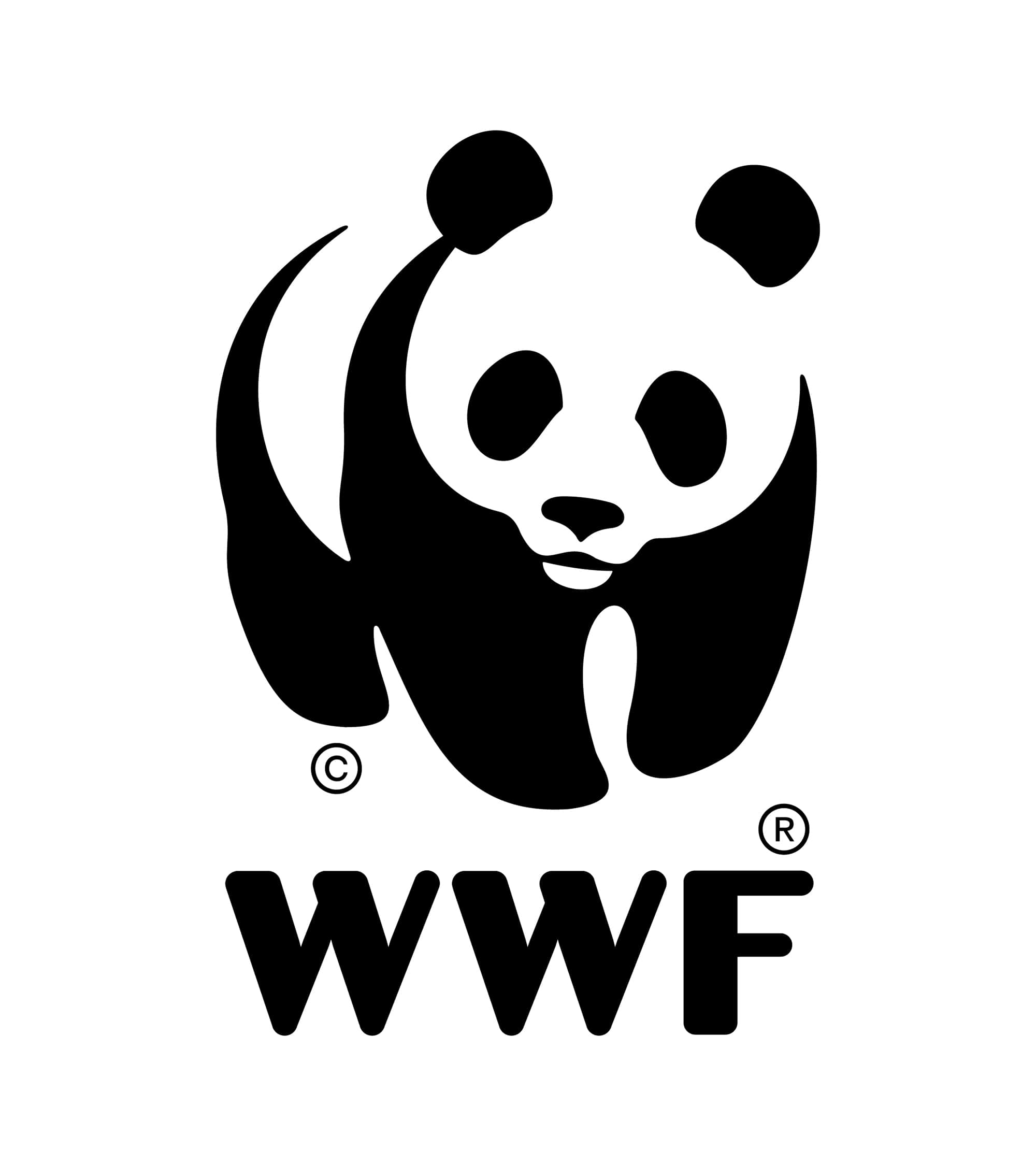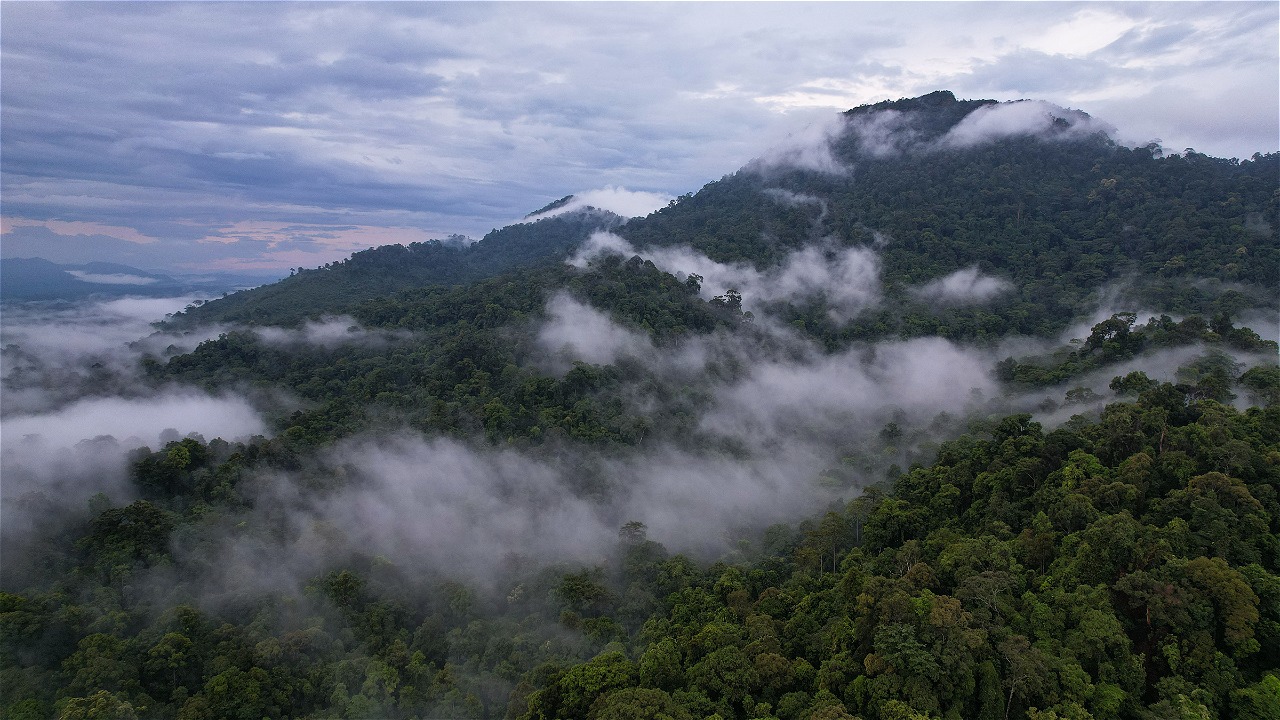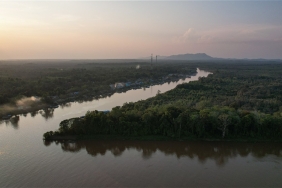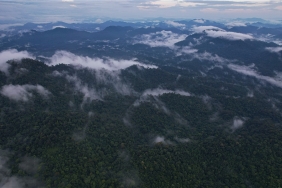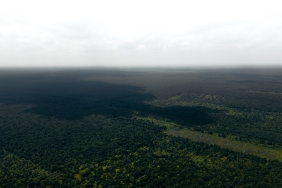MULLER AREA AS A LOCALIZED KSN CORRIDOR
Jakarta, October 25, 2011: To support the management of Muller Area as an important ecosystem area in the heart of Borneo, the Heart of Borneo (HoB) National Working Group (Pokjanas) in collaboration with the Ministry of Forestry and WWF-Indonesia held a Workshop on Muller Ecosystem Area as an Ecological Corridor of HoB National Strategy Area on October 25, 2011. The one-day workshop was attended by stakeholders from both the central government, namely the Ministry of Forestry and the relevant Regional Government Work Units (SKPD) from West Kalimantan and Central Kalimantan. The workshop, which was officially opened by the Chairman of the HoB Pokjanas, Dr. Andi Novianto, aimed not only to socialize the delineation of the Muller Ecosystem Area (KEM), but also to present biodiversity and discuss the form of KEM management and formulate a joint follow-up plan.
"The Muller Ecosystem Area is an area proposed as one of the ecological corridors in the Draft Presidential Regulation (Raperpres) of the HoB National Strategy Area (KSN)," said Andi Novianto. Furthermore, Andi Novianto added that a strong commitment is needed from the local government, namely the Provinces of West Kalimantan, Central Kalimantan and East Kalimantan to propose more effective management in the Muller Mountains area.
In the panel discussion, it was revealed that the Muller Ecosystem Area has several main functions related to High Conservation Value Forest (HCVF). This was conveyed by Ir. Budi Prihanto, MS from the Center for Forestry Organization Capacity and Institutional Development, Faculty of Forestry, Bogor Agricultural University (FORCI Dev-IPB) in a presentation on the typology of the Muller Ecosystem Area. "The Muller Ecosystem Area, which is dominated by protected forests and limited production forests, is an area that has high conservation value which includes protection of biodiversity, important landscapes, unique ecosystems, important environmental services, social basic needs of local communities and the culture of local communities," said the Lecturer of Forest Management Department, Faculty of Forestry, IPB. Furthermore, according to Budi Prihanto, the Muller Ecosystem Area has 8 dominant typologies out of 19 typologies, the determination of which is based on the function of the area and the function in HCVF.
Meanwhile, a researcher from the Indonesian Institute of Sciences (LIPI), Dwi Murti Puspitaningtyas, said that LIPI had conducted a feasibility study of the Muller Mountains area for designation as a Natural World Heritage. "The results of the LIPI study show that the Muller Mountains meet the criteria that refer to the Natural World Heritage, both the diversity of rare species of flora and fauna, as well as the unique combination of mountain panoramas, watersheds and cascades, and tropical rainforests," said the researcher from the Bogor Botanical Garden.
The Muller Ecosystem Area is an ecological corridor area connecting Bukit Baka Bukit Raya National Park (TN), Betung Kerihun National Park and Sapat Hawung Nature Reserve. The Muller Ecosystem covers the Pangihan Lambuanak Protection Forest in West Kalimantan, the Batu Batikap Protection Forest and the Sapat Hawung Nature Reserve in Central Kalimantan. In addition, this area, which has an area of about 1.3 million hectares, is really in the center or at the heart of the HoB. Administratively, the Muller Ecosystem Area is included in the territory of 4 districts namely Sintang and Melawi in West Kalimantan and Gunung Mas and Murung Raya in East Kalimantan.
At the end of this one-day workshop, several things were agreed upon regarding the management of the Muller Ecosystem Area, namely:
- The Muller Ecosystem Area (KEM) meets the criteria of WORLD Natural Heritage because it contains a unique combination of mountain panoramas, swift flow watersheds with cascades, tropical lowland forests, living cave complexes with rivers flowing in them and the presence of limestone hills
- KEM has a distinctive typology of areas that are related to the protection of biodiversity, the protection of important landscapes, the protection of distinctive ecosystems, the protection of important/critical environmental services, the protection of social basic needs of the community, and the protection of local community culture
- Based on the typology of unique areas, the concept and management model must be considered which tends to focus on both human needs and environmental concerns. It should not be taken to the extreme of looking only at ecological interests as in the classical conservation approach, but also should not be seen only for the sake of human interests only.
- Concepts that should be implemented in the area should be considered.
- The concept that must be developed is that KEM is not an object of utilization but management and must be seen holistically, not partially
- The concept and management model of KEM (National Park, Nature Reserve or KPHA) must pay attention to the distribution of authority, distribution of benefits and certainty of rights of all stakeholders
- The form of management can combine several models, but prioritizes the optimal management model and can be accessed by the community.
- The community must directly benefit from the chosen management model. The community is not only a stakeholder, but also a shareholder in decision-making. The local wisdom of the local community must be considered.
- The form of management must cooperate with all parties and not only be a matter for the central government. Referring to PP 28/2011, the management of the area must cooperate with all parties since the planning.
- There needs to be sensitivity to communicate the economic aspects of KEM, because political will from the government is very important.
.
.
.
